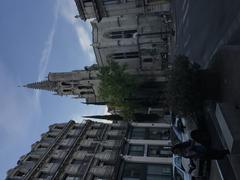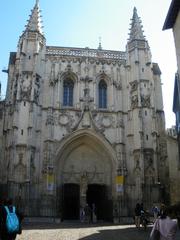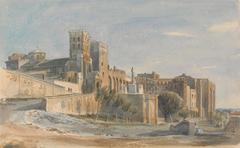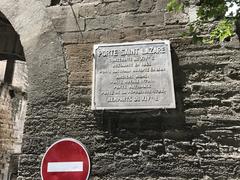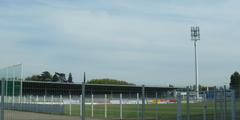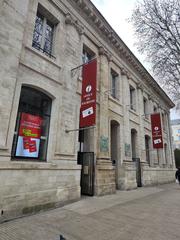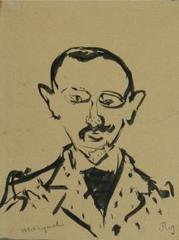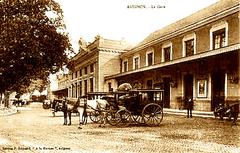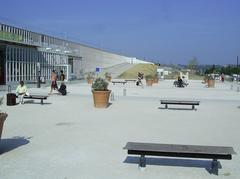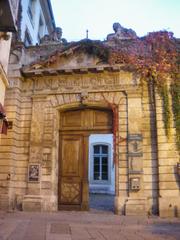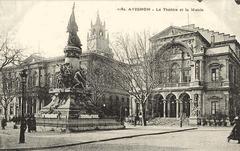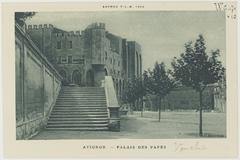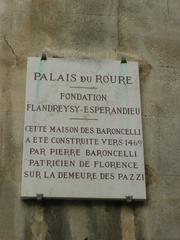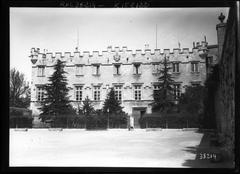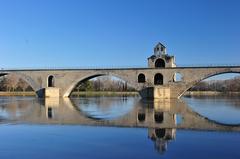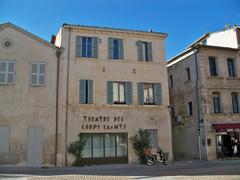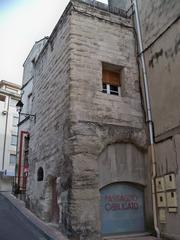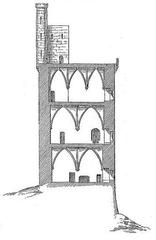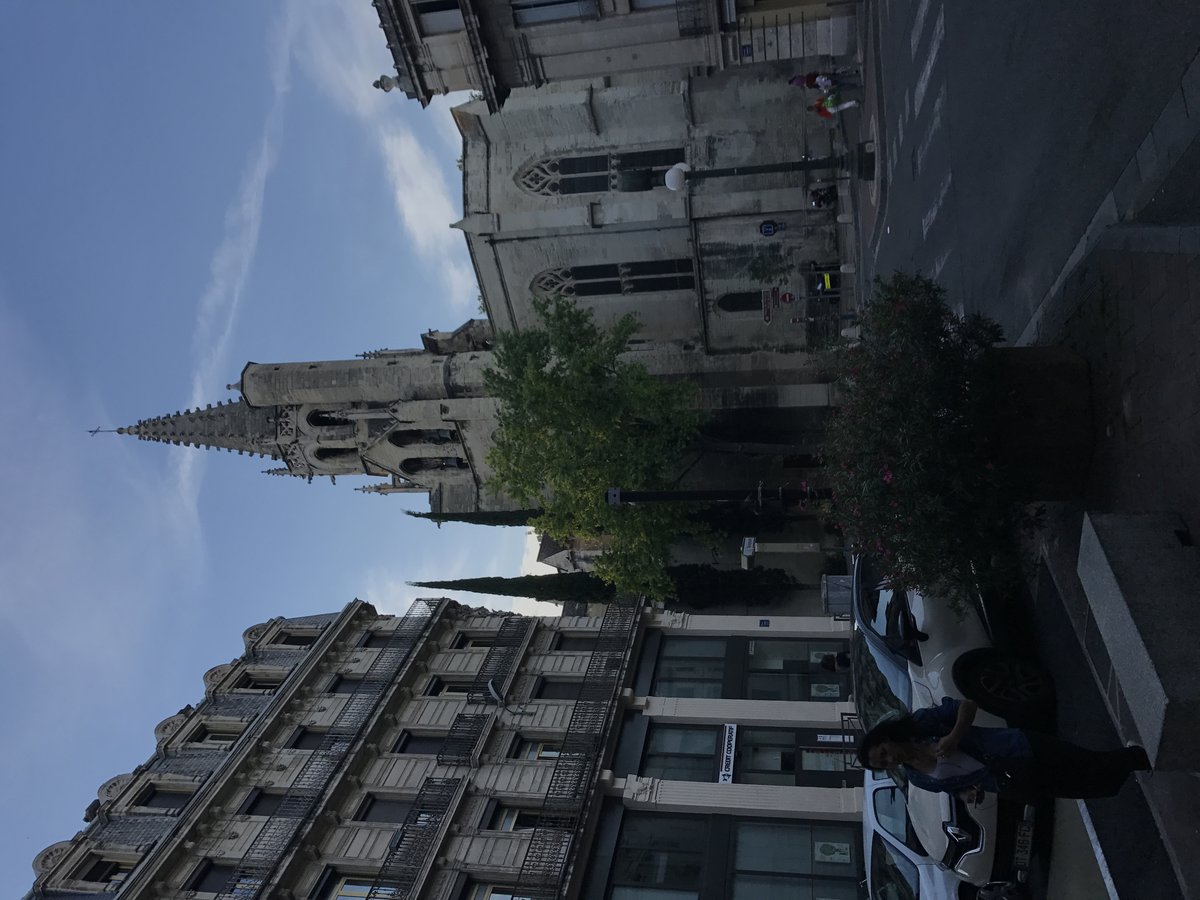
Visiting Sacré Coeur in Avignon: Hours, Tickets, and Tips
Publication Date: 31/07/2024
Introduction to Sacré Coeur
The Sacré Coeur Basilica in Avignon, France, is an architectural marvel and a significant spiritual landmark that draws visitors from around the world. Unlike its more ancient counterpart in Paris, the Sacré Coeur in Avignon was conceived in the 19th century, a time of great religious and political upheaval. The basilica’s origins date back to the aftermath of the Franco-Prussian War, a period marked by a national desire for atonement and spiritual renewal. The construction of this Neo-Byzantine-Romanesque masterpiece began in 1875 and took over 40 years to complete, finally opening its doors in 1914 (TripSavvy).
The basilica is dedicated to the Sacred Heart of Jesus, symbolizing divine love and mercy, and has maintained the practice of perpetual adoration of the Holy Eucharist since 1885. Visitors are captivated not only by its religious significance but also by its stunning architectural features, including a grand dome that offers breathtaking panoramic views of Avignon. This guide provides a comprehensive overview of the Sacré Coeur Basilica, covering its rich history, architectural details, visitor information, and tips, ensuring an enriching experience for all who step into its hallowed halls.
Table of Contents
- Introduction
- Origins and Early History
- Proposal and Construction
- Architectural Design
- Religious Significance
- Cultural and Historical Context
- Architectural Features
- The Dome and Panoramic Views
- Visitor Tips
- Tickets and Financial Contributions
- Accessibility Options
- Nearby Attractions
- Special Events and Guided Tours
- Photographic Spots
- FAQ
- Conclusion
Origins and Early History
The Basilica of Sacré Coeur in Avignon is a relatively modern addition to the city’s rich historical tapestry. Unlike its Parisian counterpart, the Sacré Coeur in Avignon does not have ancient roots dating back to the Roman era. Instead, its origins are firmly planted in the 19th century, a period marked by significant religious and political upheaval in France.
Proposal and Construction
The idea for the Sacré Coeur Basilica in Avignon was conceived in the aftermath of the Franco-Prussian War (1870-1871). This period saw a resurgence of religious sentiment in France, driven by a desire for national atonement and spiritual renewal. The defeat of France and the capture of Emperor Napoleon III at the Battle of Sedan were seen by many as divine retribution for the moral decline of the nation since the French Revolution. This sentiment was echoed by Felix Fournier, the Bishop of Nantes, who first proposed the construction of a new church dedicated to the Sacred Heart of Jesus in 1870.
The construction of the Sacré Coeur Basilica in Avignon began in earnest in 1875, following a successful fundraising campaign led by philanthropist Alexandre Legentil. Legentil, a follower of Frédéric Ozanam, the founder of the Society of Saint Vincent de Paul, was instrumental in rallying support for the project. He believed that the construction of the basilica would serve as a form of penance for the sins of the nation and a means of securing divine mercy.
Architectural Design
The design of the Sacré Coeur Basilica in Avignon was selected through a competition that attracted seventy-seven proposals. The winning design, by architect Paul Abadie, was a stunning example of Neo-Byzantine-Romanesque architecture. Abadie’s design featured a prominent white dome and towers made of travertine limestone, which gave the basilica its characteristic gleaming appearance. The construction of the basilica took over 40 years to complete, with work continuing under five different architects. The basilica was finally completed in 1914, although its dedication was delayed until after World War I, in 1919.
Religious Significance
The Sacré Coeur Basilica in Avignon holds significant religious importance. It is dedicated to the Sacred Heart of Jesus, a symbol of divine love and mercy. The basilica has maintained perpetual adoration of the Holy Eucharist since 1885, a tradition that continues to this day. This practice involves the continuous display of the Blessed Sacrament (Christ’s body, consecrated during the Mass) in a monstrance above the high altar.
Cultural and Historical Context
The construction of the Sacré Coeur Basilica in Avignon must be understood within the broader cultural and historical context of late 19th and early 20th century France. This period was marked by a struggle between secular and religious forces, with the French Third Republic promoting secularism and the separation of church and state. The basilica, therefore, stands as a symbol of the enduring influence of the Catholic Church in France, even in the face of growing secularism.
Architectural Features
The Sacré Coeur Basilica in Avignon is renowned for its stunning architectural features. The exterior of the basilica is adorned with a large statue of Christ in Majesty, as well as statues of saints and other religious figures. The interior is equally impressive, with soaring arches, ornate stained-glass windows, and intricate mosaics. The nave, in particular, is a sight to behold, with its grand arches and vibrant stained glass. The apse houses a large mosaic depicting Christ in Majesty, a focal point for visitors and worshippers alike.
The Dome and Panoramic Views
One of the most striking features of the Sacré Coeur Basilica in Avignon is its dome. Visitors can climb the nearly 300 steps to the top of the dome, where they are rewarded with breathtaking panoramic views of the city and its surroundings. The dome offers a unique vantage point, allowing visitors to take in the beauty of Avignon from above. The climb, while challenging, is well worth the effort for the stunning views it provides.
Visitor Tips
Opening Hours
- The basilica is open to visitors from 06:00 to 22:30 every day.
- The dome is accessible from 09:00 to 19:00 in the summer and until 18:00 in the winter.
Dress Code
- Visitors are advised to dress appropriately and observe silence as much as possible, out of respect for those who come to pray.
Photography Rules
- Photography is not allowed inside the basilica.
Tickets and Financial Contributions
Visitors to the Sacré Coeur Basilica in Avignon are encouraged to make a financial contribution to support the maintenance and preservation of the site. The contribution amount for the dome visit is €6 per person for groups of 20 or more. Tickets can be purchased at the ticket office on site, and no prior reservation is needed.
Accessibility Options
The basilica is accessible by bus or metro line 2 at Anvers station. Additionally, there are ramps and elevators available for visitors with mobility issues.
Nearby Attractions
For those looking to explore more of Avignon’s historical sites, the Palais des Papes and the Pont Saint-Bénézet are nearby and offer a deeper dive into the city’s rich history.
Special Events and Guided Tours
The Sacré Coeur Basilica hosts special events throughout the year, including religious ceremonies, concerts, and art exhibitions. Guided tours are also available, providing visitors with an in-depth understanding of the basilica’s history and architecture.
Photographic Spots
The basilica and its surroundings offer numerous photographic opportunities. The panoramic views from the dome and the intricate details of the basilica’s interior and exterior make for stunning photographs.
FAQ
Q: What are the Sacré Coeur visiting hours?
- The basilica is open from 06:00 to 22:30 daily, with the dome accessible from 09:00 to 19:00 in the summer and until 18:00 in the winter.
Q: How much does it cost to visit the dome of Sacré Coeur in Avignon?
- The contribution amount for the dome visit is €6 per person for groups of 20 or more.
Q: Are guided tours available at Sacré Coeur Basilica?
- Yes, guided tours are available and provide an in-depth understanding of the basilica’s history and architecture.
Conclusion
The Sacré Coeur Basilica in Avignon is a testament to the enduring power of faith and the resilience of the human spirit. Its rich history, stunning architecture, and spiritual significance make it a must-visit destination for anyone traveling to Avignon. Whether you are drawn by its religious importance, its architectural beauty, or the breathtaking views from its dome, the Sacré Coeur Basilica offers a unique and unforgettable experience.
Call to Action
For more information and updates on the Sacré Coeur Basilica in Avignon, download the mobile app Audiala, check out other related posts on our site, and follow us on social media.
Summary and Key Points
The Sacré Coeur Basilica in Avignon stands as a testament to the enduring power of faith and the resilience of the human spirit. Completed in the early 20th century, it has since become a beacon of spiritual significance and architectural beauty. The basilica’s rich history, from its conception in the wake of the Franco-Prussian War to its role as a symbol of divine mercy, makes it a must-visit destination for anyone traveling to Avignon. Whether you are drawn by its religious importance, its architectural grandeur, or the panoramic views from its dome, the Sacré Coeur Basilica offers an unforgettable experience. For more detailed information, updates, and tips on visiting, consider downloading the Audiala app or following related posts and social media channels (Dreams in Paris).
References and Further Reading
- TripSavvy, 2023, Sacré Coeur Visitor’s Guide (TripSavvy)
- Rick Steves, 2023, Best Time to Visit Sacré Coeur (Rick Steves)
- Dreams in Paris, 2023, Sacré Coeur in Paris (Dreams in Paris)
- Cultured Voyages, 2023, Things to Do in Avignon France (Cultured Voyages)
